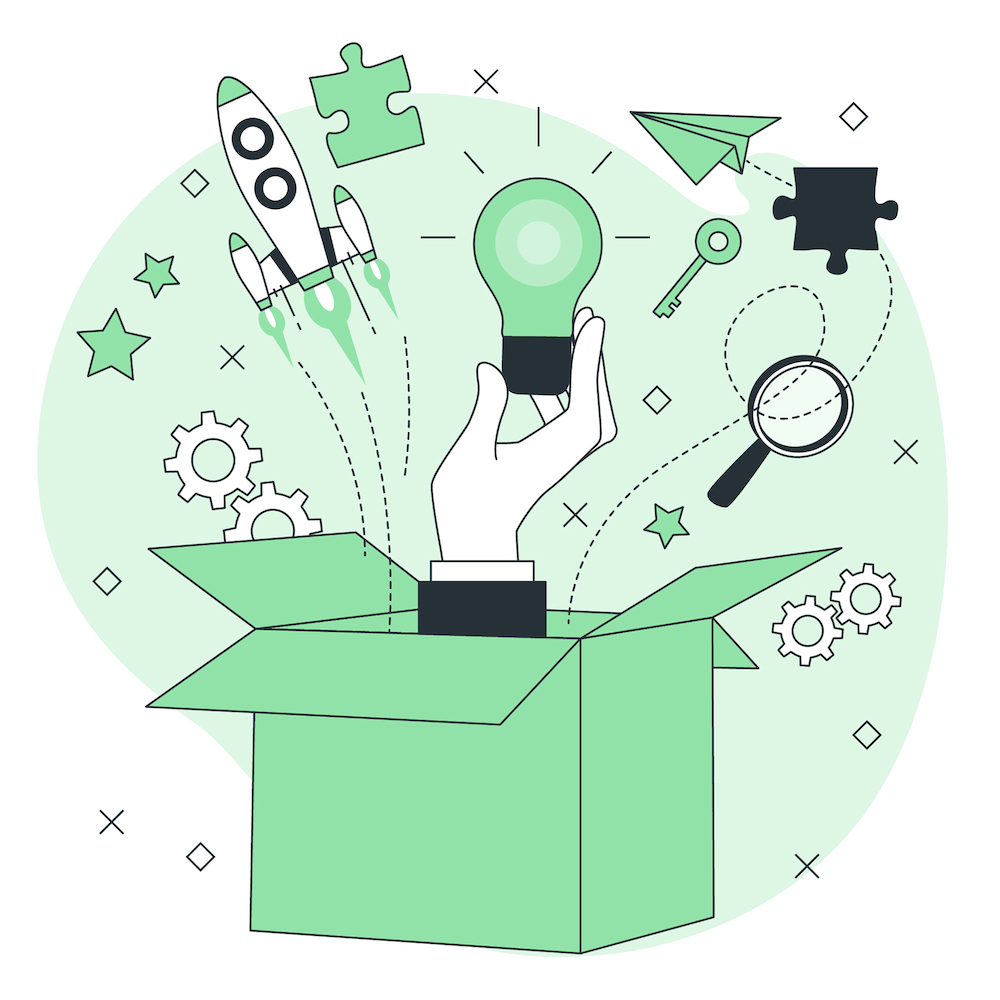Customer satisfaction is essential for any business that wants to succeed
Conducting a customer satisfaction survey is more than just collecting feedback; it's a strategic tool that unlocks invaluable insights into your customer's experience, expectations, and perceptions of your brand. Recognizing the importance of customer satisfaction is crucial in today’s competitive market where customer loyalty and engagement are essential for maintaining and growing your business. By implementing satisfaction surveys, you are taking a proactive step towards measuring and enhancing the overall customer experience, which is a key determinant of your business's success.
This article will guide you through the multiple benefits and the significant role that a customer satisfaction survey plays in understanding and meeting customer expectations, identifying factors that contribute to both satisfaction and dissatisfaction, and anticipating market changes and trends. Furthermore, it will explore how stronger customer relationships can be built through effective use of customer feedback, empowering internal teams, and ultimately, how maximizing customer satisfaction can catalyze business growth. Discover how integrating the voice of the customer into your business strategy through satisfaction surveys can lead to improved customer retention, loyalty, and a better customer satisfaction score, ensuring your company’s long-term success and competitiveness in the market.
Understand the Importance of Customer Satisfaction Surveys
What Are Customer Satisfaction Surveys?
Customer satisfaction surveys are tools utilized by businesses to measure how much a consumer enjoys, prefers, or dislikes their products or services. These surveys are essential for gathering feedback and are widely recognized as a fundamental component for customer-oriented organizations. Whether the focus is on goods or services, the feedback received from these surveys provides critical insights into the consumer's satisfaction levels.
Key Objectives of Customer Satisfaction Surveys
Assessing Customer Loyalty and Engagement: Surveys such as the Net Promoter Score (NPS) gauge the likelihood of a customer recommending your product or service to others, helping identify promoters, passives, and detractors within your customer base.
Improving Product and Service Quality: Feedback from customer satisfaction surveys can reveal significant details about new products, such as the public’s opinion on design, usability, and pricing, which can be instrumental in adjusting the financial strategies for these offerings.
Enhancing Customer Experience: By evaluating responses, companies can identify and address common bottlenecks that negatively impact customer experiences, thus fostering a better overall user experience.
Driving Business Growth: Satisfied customers are more likely to make repeat purchases and recommend your business to others, effectively aiding in both customer retention and acquisition.
Informing Company Strategy: The insights gained from these surveys can help align internal teams and strategies with customer expectations, ensuring that every department from marketing to product development is customer-focused.
By integrating these surveys into regular business practices, companies not only show that they value customer feedback but also commit to continual improvement based on that feedback. This proactive approach can significantly enhance customer satisfaction, loyalty, and ultimately, the success of the business.
Meeting Customer Expectations
Meeting customer expectations is a multifaceted challenge that requires a deep understanding of what your customers truly want, even when they might not be able to articulate it themselves. Many companies have recognized the importance of collecting direct feedback from customers to gauge their perceptions of product quality. However, understanding customer needs goes beyond simply gathering feedback; it involves analyzing and acting upon the information to ensure that your products and services meet, and ideally exceed, customer expectations.
How Surveys Help Gauge Customer Needs
Gathering Direct Feedback: Surveys, interviews, and feedback from salespeople are primary methods for understanding how customers rate your products against competitors. This internally generated information is crucial for assessing customer satisfaction and loyalty.
Identifying Consumer Perceptions: Customer perceptions of quality are influenced at every stage of the buying process. Surveys help identify these perceptions, providing insights into what customers truly value.
Understanding Service Demand Patterns: Customer service needs often change over the product lifecycle. Surveys can help companies understand these patterns, enabling them to adjust their service offerings accordingly.
Pinpointing Areas for Improvement: Through surveys, companies can identify specific areas where customers feel the product or service could be improved. This feedback is invaluable for guiding product development and enhancing customer experience.
Ensuring Quality through Feedback
-
Refining Product and Service Offerings: Feedback collected from customers is one of the most valuable sources of information for improving your products. It tells you what your customers like, dislike, need, and expect from your offerings. Utilizing this feedback allows for the refinement of products and services to better meet customer expectations.
-
Improving Distribution Models: Insights shared by customers offer valuable perspectives on interactions with distribution channels. By categorizing and analyzing feedback, companies can identify trends, pinpoint areas for improvement, and collaborate with distribution teams to enhance the customer experience.
-
Enhancing Customer Service: A customer service audit can reveal much about how your company's services compare with those of the competition and what services your customers truly value. This understanding enables companies to develop superior performance in areas that customers consider important.
-
Prioritizing Enhancements: Customer feedback should be seamlessly integrated into the development workflow, ensuring that prioritized enhancements become tasks that are tracked and communicated. This approach fosters a sense of being heard and valued among customers, strengthening customer relationships.
In conclusion, meeting customer expectations is a dynamic process that requires continuous engagement with your customers through surveys and feedback mechanisms. By understanding and acting on customer needs, companies can ensure product quality, enhance customer satisfaction, and ultimately, build stronger customer relationships.
Identifying Satisfaction and Dissatisfaction Factors
Identifying the factors that lead to both satisfaction and dissatisfaction among your customers is crucial for refining your business strategies and enhancing the overall customer experience. This section delves into the methodologies and tools that can help pinpoint these critical areas.
Detecting Areas for Improvement
-
Utilize Data Analytics: Leverage statistical tools to analyze survey responses, focusing on low-rated areas and recurring themes. Look for patterns that indicate common issues or areas where expectations are not being met.
-
Segmentation Analysis: Break down your customer base into meaningful groups based on demographics, purchase history, or satisfaction levels. This allows for more targeted analysis and understanding of different customer needs and expectations.
-
Qualitative Research: Engage in interviews or focus groups to gather deeper insights. These discussions can reveal the nuances behind customer feelings and perceptions that surveys might miss.
-
Continuous Monitoring: Regularly review customer feedback to stay updated on customer needs and to quickly respond to any emerging dissatisfaction trends.
-
Root Cause Analysis: Implement techniques to dig deeper into the causes of dissatisfaction. Understanding the 'why' behind the issues allows for more effective solutions.
Enhancing Positive Experiences
-
Empathy Mapping: Use this tool to gain a deeper understanding of your customer’s emotional journey. By visualizing what customers say, think, feel, and do, you can better understand their experiences and pinpoint areas for positive enhancement.
-
Co-creation Workshops: Involve customers in the development and refinement of solutions. Their direct input can ensure that improvements align with their expectations and address their specific needs.
-
Journey Mapping: Visualize each stage of the customer interaction with your service. Identify and enhance positive touchpoints to improve overall customer satisfaction.
-
Leverage AI and Automation: Utilize advanced technologies like AI for sentiment analysis, predictive modeling, and personalized customer interactions. These tools can transform vast amounts of data into actionable insights, enabling you to proactively enhance customer experiences.
By systematically identifying areas for improvement and enhancing positive experiences, you can ensure a more satisfying and loyal customer base. This proactive approach not only addresses current issues but also sets the stage for sustained success by continuously adapting to customer needs and expectations.
Anticipating Market Changes and Trends
Adapting to Evolving Customer Needs
Understanding and adapting to customer needs is essential for staying relevant in a rapidly changing market. By analyzing customer feedback, you can detect emerging needs and demands driven by social, economic, or technological
trends. This proactive approach allows you to adapt your products and services to meet evolving expectations, ensuring your offerings remain competitive and appealing.
-
Utilize Privileged Insights: Implement systems that provide unique and relevant information about your customers. This might include direct engagement methods or integrating customers into the product development process. Such insights help you understand real-time needs and desires, which can be pivotal for adapting swiftly to market changes.
-
Engage in Continuous Learning: Regularly update your understanding of customer preferences by monitoring feedback across various channels. This includes surveys, social media interactions, and direct customer communications. Keeping a pulse on this feedback helps you anticipate changes in customer behavior and preferences.
-
Innovate Based on Feedback: Use the insights gathered to innovate and introduce new features, products, or services that align with the identified customer needs. This not only enhances customer satisfaction but also positions your brand as a market leader who listens and responds to its user base.
Staying Ahead of Competitors
To maintain a competitive edge, it’s crucial to not only respond to market trends but also to anticipate and set them. This involves understanding both the market and your competitors' strategies comprehensively.
-
Monitor Competitor Activities: Keep an eye on your competitors’ product developments, market entries, and customer engagement strategies. This can provide valuable insights into where the market is heading and how you can differentiate your offerings.
-
Analyze Market Data: Use data analytics to understand market dynamics and predict future trends. This includes analyzing customer behavior, competitor performance, and market conditions. Such analysis can help you stay one step ahead by developing strategies that cater to future market needs before they become apparent.
-
Lead with Innovation: Instead of merely following trends, aim to set them by leveraging your brand’s strengths. Understand why customers align with your brand and use this to lead the market through innovative practices and solutions. This strategic positioning not only enhances brand value but also establishes you as a leader in the industry.
By focusing on these strategies, you can effectively anticipate market changes and trends, thereby ensuring your business remains ahead in a competitive landscape. This proactive approach not only helps in adapting to current market conditions but also in shaping future market trends, ultimately leading to sustained business growth and customer loyalty.
Building Strong Customer Relationships
Engaging with Customers
Engaging with your customers is more than just a business transaction; it's about developing a relationship where they feel valued and understood. Business2Community highlights the importance of customer engagement by comparing it to the difference between a friend and an acquaintance. To transform customers into 'friends' of your brand, regular and meaningful communication is essential. When customers engage with your company multiple times, familiarity grows, and their connection to your brand deepens. This can be facilitated by employing various engagement strategies such as personalized communications, regular updates, and responsive customer service.
For instance, during the initial stages of engagement, brief customer satisfaction surveys can be incredibly useful. They provide insights into customer preferences and help tailor your services to meet their specific needs. As the relationship matures, maintaining this engagement becomes crucial. Regular interactions ensure that your brand remains their preferred choice, even when new options enter the market.
Fostering Loyalty and Trust
Building customer loyalty is a strategic process that involves more than just rewards; it's about creating trust and a sense of mutual respect. Modern loyalty programs have evolved beyond simple point systems; they now leverage technology to offer personalized experiences and gather valuable marketing data. For example, electronic loyalty programs, as utilized by companies like Foursquare, not only provide convenience but also enhance customer engagement through gamification and tailored offers.
To foster deep loyalty, it's crucial to understand and meet the ever-changing needs of your customers. This involves more than just reacting to their demands—it requires anticipation and proactive engagement. Implementing a continuous feedback loop is essential in this process. By actively seeking and acting upon customer feedback, you demonstrate that you value their input, which in turn, strengthens their trust in your brand.
Moreover, transparency in how you use customer feedback can further enhance trust. Sharing how customer insights have shaped your business decisions and improved their overall experience shows a commitment to their satisfaction and encourages continued engagement.
By focusing on these strategies, you can build stronger relationships with your customers, making them not only loyal patrons but also advocates for your brand.
Empowering Internal Teams with Customer Feedback
Empowering your internal teams with customer feedback is a strategic approach that can significantly enhance the effectiveness of your business operations and foster a customer-centric culture. This section explores how leveraging customer insights can motivate employees, inform decision-making, and ultimately contribute to a more satisfying customer experience.
Creating a Customer-Centric Culture
-
Motivation Through Linking Actions to Results: Employees are more likely to be motivated when they see how their actions directly impact customer satisfaction. For instance, strategies aimed at reducing customer wait times or simplifying transitions can be highlighted in real-time to demonstrate the successful implementation of customer-centric strategies.
-
Hiring for Customer-Centricity: The recruitment of talent should focus on aligning with customer-centric thinking. Employees, regardless of their role, should understand the importance of customer experience in your business, shaping many of the experiences customers have with your brand.
-
Centralized Access to Customer Data: Adopting a customer-centric strategy necessitates easy access to customer data and insights. Utilizing a Customer Relationship Management (CRM) database can facilitate a better understanding of customers, enabling a unified approach that delivers superior customer experiences.
-
Viewing Customers as Partners: It’s crucial to remember that customers are not merely numbers in a report but individuals seeking mutually beneficial relationships with your brand. This perspective encourages treating customers as partners, fostering a more personal connection and understanding.
Using Feedback for Decision Making
-
Building a Culture of Continuous Feedback: The most successful companies understand the importance of building a culture that values customer satisfaction. This involves regularly gathering feedback to gain insights into customer expectations, preferences, and dissatisfaction points.
-
Feedback Collection and Analysis: Directly asking customers for feedback is the most effective way to gather insights. Implementing systems like Net Promoter Score (NPS) and Customer Satisfaction (CSAT) surveys simplifies the feedback process, making it easy for customers to share their thoughts.
-
Prioritizing and Addressing Feedback: Not all feedback is equally critical. Developing a process to rate feedback from most to least critical allows you to address the most pressing issues first. This proactive approach lays the foundation for enhanced customer satisfaction.
-
Transparent Communication with Customers: As you implement changes based on customer feedback, it’s important to communicate these adjustments back to the customers. This not only shows that you value their input but also keeps them informed about how their feedback is shaping your business.
-
Cross-Team Commitment to Customer Satisfaction: Creating a customer-centric culture requires the involvement of every department within your company. From customer service to sales, marketing, and product development, each team plays a crucial role in contributing to customer satisfaction.
By empowering internal teams with customer feedback, you embed a customer-centric approach into the fabric of your company. This not only enhances the customer experience but also drives business growth by aligning your operations with the needs and expectations of your customers.
Maximizing Business Growth through Customer Satisfaction
Customer satisfaction is not just a metric to measure how happy your customers are with your products or services; it's a strategic tool that can significantly impact your business's growth and sustainability. By prioritizing customer satisfaction, you can unlock potential revenue streams, enhance customer retention, and harness the power of word-of- mouth referrals. Let's delve into how focusing on customer satisfaction can lead to business growth.
Boosting Revenue and Retention
-
Increased Spend from Satisfied Customers: Research indicates that 81% of customers who are satisfied with their experience are more likely to spend money with a brand again. This loyalty translates into repeated purchases and increased lifetime value, contributing directly to your bottom line.
-
Reducing Churn through Continuous Improvement: A customer experience survey serves as a comprehensive check on customers' perceptions, playing a crucial role in retention. By identifying issues early and innovating solutions, you can catch problems before they escalate, ensuring your service quality is constantly improving. This proactive approach results in higher customer retention and loyalty scores.
-
Leveraging Positive Experiences: Discovering what makes your customers happy is akin to finding a pot of gold. Understanding and replicating these positive experiences across your customer base can lead to increased satisfaction, turning customers into brand advocates.
-
Personalization as a Key to Impulse Purchases: Customers receiving a personalized experience are 49% more likely to make impulse purchases. Simple strategies like email segmentation and personalized recommendations can significantly enhance customer satisfaction and spending.
Encouraging Word-of-Mouth Referrals
-
Natural Advocacy from Satisfied Customers: Satisfied customers are your best salespeople. They are more likely to refer your brand to their peers, with people placing higher value and trust in recommendations from someone they know. Creating a customer loyalty program with perks for referrals can further incentivize this behavior.
-
Referral Marketing Amplification: Referral marketing takes natural word-of-mouth and amplifies it by rewarding happy customers for sharing their positive experiences. Offering incentives for both the referrer and the referred can accurately track and increase successful referrals.
-
Building Trust through Referrals: Trust and credibility are the cornerstones of successful referral marketing. Customers are more likely to trust recommendations from friends and family over traditional advertising, making referrals a valuable source of new, high-quality leads.
-
Cost-Effective Acquisition and Higher Conversion Rates: Acquiring new customers through referrals is generally more cost-effective than traditional advertising channels. Referred customers often have higher conversion rates, lower acquisition costs, and exhibit greater loyalty and retention rates.
By focusing on customer satisfaction and leveraging the power of positive experiences and referrals, businesses can significantly enhance their growth and sustainability. Implementing strategies that prioritize and improve customer satisfaction not only contributes to a better customer experience but also drives business success through increased revenue, retention, and the acquisition of new customers through trusted referrals.
Conclusion
Throughout this exploration, it has been clear that prioritizing customer satisfaction is not merely a business option, but a fundamental necessity for compelling growth and sustainability in today's competitive landscape. The insights obtained from customer satisfaction surveys serve as a linchpin in understanding and exceeding customer expectations, thus reinforcing customer loyalty, fostering strong relationships, and amplifying the voice of the customer across business operations. This strategical alignment with customer feedback not only enhances the quality of products and services but also elevates overall customer experiences, driving both retention and revenue.
As businesses continue to navigate the complexities of market demands, incorporating a customer-centric approach through the consistent application of satisfaction surveys and feedback mechanisms proves crucial for staying ahead. By meticulously analyzing and acting upon customer feedback, companies are empowered to anticipate needs, tailor experiences, and implement improvements that resonate deeply with their audience. In turn, this dedication to customer satisfaction cultivates an environment of trust and loyalty, setting the stage for a prosperous and enduring relationship between businesses and their valued customers.
FAQs
1. Why is conducting a customer satisfaction survey crucial for businesses?
Conducting a customer satisfaction survey is essential because it allows businesses to make informed decisions based on customer feedback. This approach prevents hasty decisions and ensures that any changes made are likely to improve customer satisfaction and business performance.
2. What advantages do customer surveys offer?
Customer surveys provide several benefits, including the ability to understand customer needs and expectations, identify and address customer issues, build trust and rapport, discover customer preferences and opinions, and gauge the company's performance and progress.
3. What is the main goal of conducting a customer satisfaction survey?
The primary goal of a customer satisfaction survey is to assess how well a company and its competitors meet customer expectations and requirements. It helps in setting product or service standards based on customer feedback and tracking trends over time to make timely improvements.
4. What does a CSAT survey aim to achieve?
A Customer Satisfaction Score (CSAT) survey aims to measure how satisfied customers are with a company's products or services. This metric is calculated from customer feedback and is expressed as a percentage, where 100% represents complete satisfaction and 0% indicates complete dissatisfaction.
Create Survey Now













